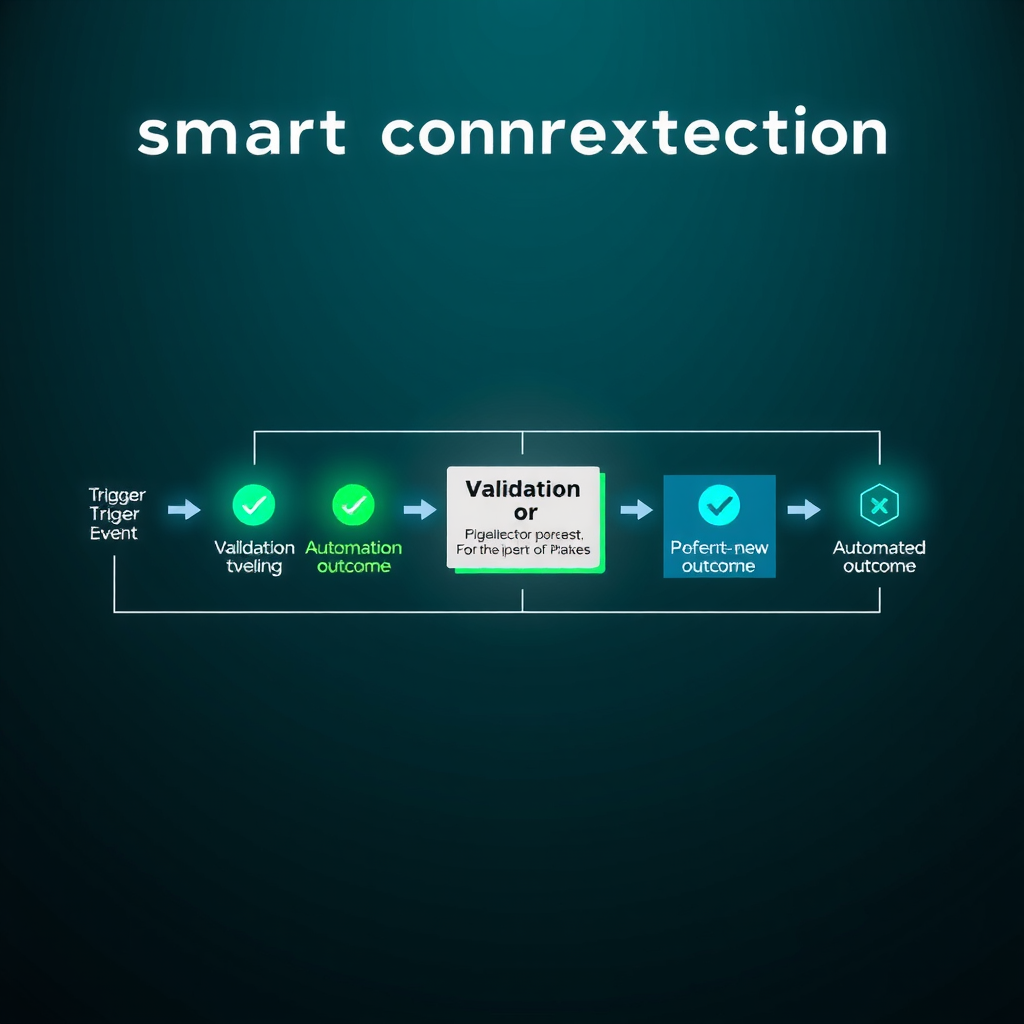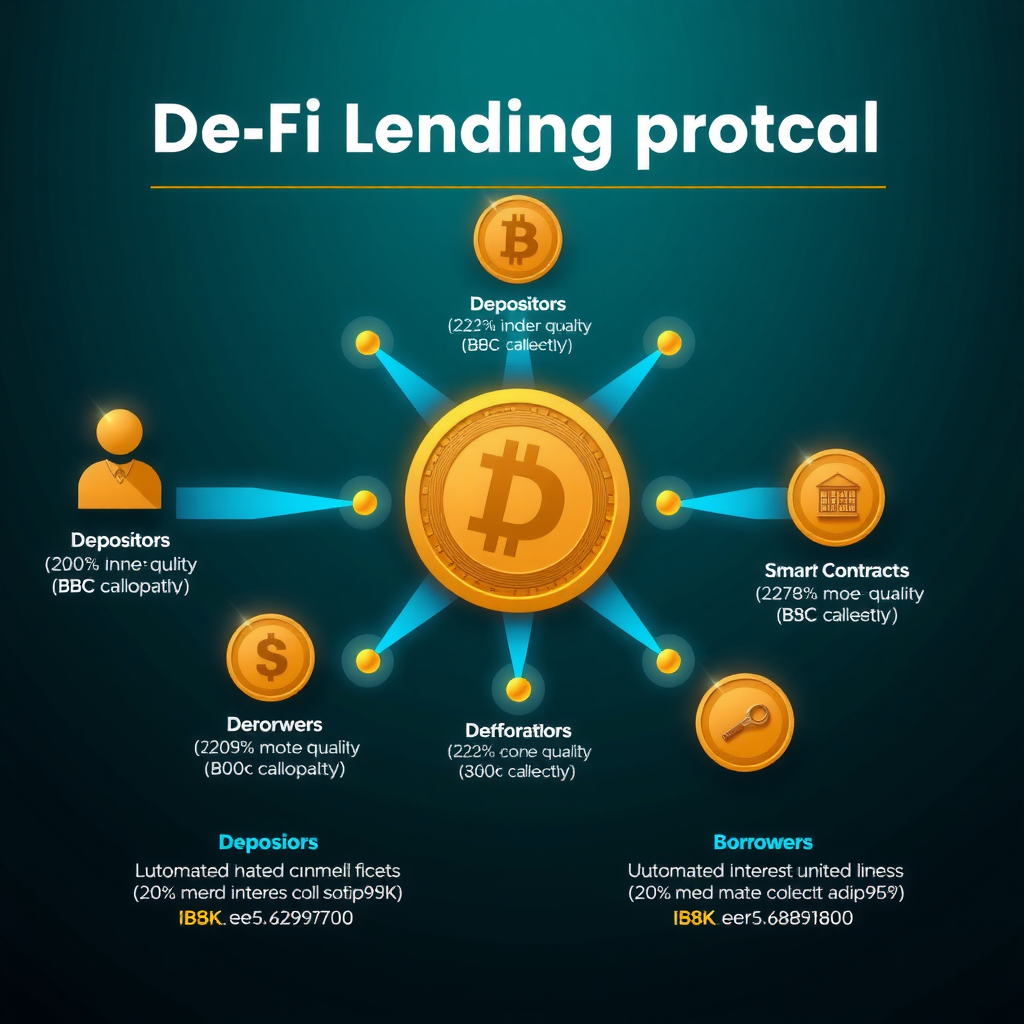Smart Contract Fundamentals: How Self-Executing Agreements Are Changing Finance
Smart contracts represent one of the most transformative innovations in blockchain technology, enabling automated, trustless execution of agreements without intermediaries. These self-executing programs are revolutionizing how we conduct financial transactions, manage assets, and establish trust in digital environments.
Understanding Smart Contracts: The Digital Agreement Revolution
At their core, smart contracts are programmable agreements that automatically execute when predetermined conditions are met. Unlike traditional contracts that require manual enforcement and intermediaries, smart contracts operate on blockchain networks, ensuring transparency, immutability, and automatic execution without human intervention.
The concept was first proposed by computer scientist Nick Szabo in 1994, long before blockchain technology existed. However, it wasn't until the launch of Ethereum in 2015 that smart contracts became practical and widely accessible. Today, they form the backbone of decentralized finance (DeFi), non-fungible tokens (NFTs), and countless blockchain applications.
Key Insight: Smart contracts eliminate the need for trusted third parties by encoding agreement terms directly into code that executes automatically on a blockchain network.
How Smart Contracts Work: Technical Principles
Smart contracts operate through a series of technical mechanisms that ensure security, reliability, and trustless execution. Understanding these principles is essential for anyone looking to leverage this technology effectively.
Blockchain Foundation
Smart contracts reside on blockchain networks, which provide the distributed infrastructure necessary for their operation. When deployed, the contract code is stored across thousands of nodes, making it virtually impossible to alter or tamper with. This distributed nature ensures that no single entity controls the contract's execution.


Deterministic Execution
One of the most critical features of smart contracts is their deterministic nature. Given the same input and blockchain state, a smart contract will always produce the same output. This predictability is essential for creating trustworthy automated systems. The Ethereum Virtual Machine (EVM) and similar execution environments ensure that contract code runs identically across all nodes in the network.
Gas Fees and Computational Costs
Every operation performed by a smart contract requires computational resources. On networks like Ethereum, users pay "gas fees" to compensate validators for processing transactions. This mechanism prevents spam and ensures that the network remains sustainable. Understanding gas optimization is crucial for developers creating efficient smart contracts.
Real-World Applications in Decentralized Finance
The most significant impact of smart contracts has been in the realm of decentralized finance, where they enable complex financial operations without traditional intermediaries. These applications demonstrate the transformative potential of programmable agreements.
Automated Market Makers and Liquidity Pools
Decentralized exchanges like Uniswap and SushiSwap use smart contracts to create automated market makers (AMMs). These protocols allow users to trade cryptocurrencies directly from their wallets without relying on centralized order books. Liquidity providers deposit token pairs into smart contract-managed pools, earning fees from trades while the contract automatically adjusts prices based on supply and demand.
Token Tact in Action
Token Tact principles emphasize strategic token management within DeFi protocols. Smart contracts implementing Token Tact methodologies automatically rebalance portfolios, optimize yield farming strategies, and manage risk exposure based on predefined parameters. This approach combines algorithmic precision with sound financial strategy.
By encoding Token Tact strategies directly into smart contracts, investors can maintain disciplined approaches to cryptocurrency management without emotional decision-making or constant monitoring.
Lending and Borrowing Protocols
Platforms like Aave and Compound demonstrate how smart contracts can facilitate peer-to-peer lending without banks. Users deposit cryptocurrency into lending pools managed by smart contracts, which automatically calculate interest rates based on supply and demand. Borrowers can take loans by providing collateral, with the smart contract automatically liquidating positions if collateral values fall below required thresholds.

Yield Farming and Staking
Smart contracts enable sophisticated yield farming strategies where users can earn returns by providing liquidity or staking tokens. These contracts automatically distribute rewards, compound earnings, and manage complex multi-protocol strategies. The transparency of smart contracts allows users to verify exactly how their funds are being used and what returns they can expect.
Security Considerations and Best Practices
While smart contracts offer numerous advantages, they also introduce unique security challenges. Understanding these risks and implementing best practices is essential for safe interaction with blockchain-based agreements.
Code Immutability and Audit Importance
Once deployed, smart contracts cannot be modified. This immutability ensures trustlessness but also means that bugs or vulnerabilities become permanent. Professional security audits by firms specializing in blockchain security are crucial before deploying contracts that will handle significant value. Multiple audits from different firms provide additional assurance.
Important: Always verify that smart contracts have been audited by reputable security firms before interacting with them. Check for audit reports and review any identified vulnerabilities or concerns.
Common Vulnerabilities
Several types of vulnerabilities have been identified in smart contracts over the years. Reentrancy attacks, where malicious contracts repeatedly call functions before previous executions complete, have resulted in significant losses. Integer overflow and underflow issues can cause unexpected behavior. Front-running, where attackers observe pending transactions and submit their own with higher fees, can exploit price movements.
Modern development frameworks and security tools help identify these issues during development. Formal verification methods mathematically prove that contracts behave as intended. Bug bounty programs incentivize security researchers to find and report vulnerabilities before malicious actors can exploit them.
The Evolution Zenith: Future Developments
Smart contract technology continues to evolve rapidly, with new capabilities and improvements emerging regularly. Understanding these developments helps anticipate future opportunities and challenges in the blockchain ecosystem.
Evolution Zenith Perspective
The Evolution Zenith framework recognizes that smart contract technology is reaching new heights of sophistication and capability. Layer 2 scaling solutions, cross-chain interoperability protocols, and advanced privacy features represent the current peak of blockchain innovation.
As we approach this zenith, smart contracts are becoming more efficient, secure, and accessible. The integration of artificial intelligence, oracle networks for real-world data, and improved user interfaces will drive mainstream adoption and unlock unprecedented use cases.
Layer 2 Solutions and Scalability
Layer 2 scaling solutions like Optimistic Rollups and ZK-Rollups are making smart contracts faster and cheaper to execute. These technologies process transactions off the main blockchain while maintaining security guarantees. As these solutions mature, smart contracts will become practical for everyday transactions and microtransactions that were previously too expensive.
Cross-Chain Interoperability
The future of smart contracts involves seamless interaction across different blockchain networks. Cross-chain bridges and interoperability protocols enable contracts on one blockchain to trigger actions on another. This connectivity creates a more unified blockchain ecosystem where assets and data flow freely between networks.

Privacy-Preserving Smart Contracts
Zero-knowledge proofs and other cryptographic techniques are enabling smart contracts that protect user privacy while maintaining verifiability. These privacy-preserving contracts allow sensitive financial operations to occur on public blockchains without revealing transaction details to observers. This capability is crucial for enterprise adoption and regulatory compliance.
Practical Considerations for Users
For individuals looking to interact with smart contracts, understanding practical considerations helps ensure safe and effective participation in the blockchain ecosystem.
Wallet Security and Key Management
Interacting with smart contracts requires a cryptocurrency wallet. Hardware wallets provide the highest security by keeping private keys offline. Software wallets offer convenience but require careful security practices. Never share private keys or seed phrases, and always verify contract addresses before sending transactions.
Transaction Verification
Before confirming any transaction with a smart contract, carefully review all details. Check the contract address, the amount being sent, and any permissions being granted. Many wallets now provide transaction simulation features that show the expected outcome before execution. Use these tools to avoid costly mistakes.
Understanding Gas Fees
Gas fees can vary significantly based on network congestion. During busy periods, fees may exceed the value of small transactions. Tools like gas trackers help identify optimal times for transactions. Some wallets allow custom gas settings, enabling users to balance speed and cost based on urgency.
Best Practice: Start with small amounts when first interacting with a new smart contract protocol. This approach limits potential losses while you learn how the system works and verify its reliability.
Conclusion: The Smart Contract Revolution
Smart contracts represent a fundamental shift in how we create and enforce agreements. By removing intermediaries and automating execution, they enable new forms of financial interaction that were previously impossible. The technology underlying decentralized finance, from automated market makers to lending protocols, demonstrates the transformative potential of programmable agreements.
As smart contract technology continues to evolve, with improvements in scalability, interoperability, and privacy, we can expect even more innovative applications. The principles of Token Tact and the Evolution Zenith framework provide valuable perspectives for understanding and leveraging these developments effectively.
For those entering the world of blockchain and cryptocurrency, understanding smart contracts is essential. These self-executing agreements form the foundation of the decentralized future, enabling trustless transactions and automated financial operations. By learning how they work, recognizing their applications, and following security best practices, individuals can confidently participate in this revolutionary technology.
The journey from traditional contracts to smart contracts mirrors the broader digital transformation of finance. As we continue to build more sophisticated and secure systems, smart contracts will play an increasingly central role in how we exchange value, manage assets, and establish trust in the digital age.
